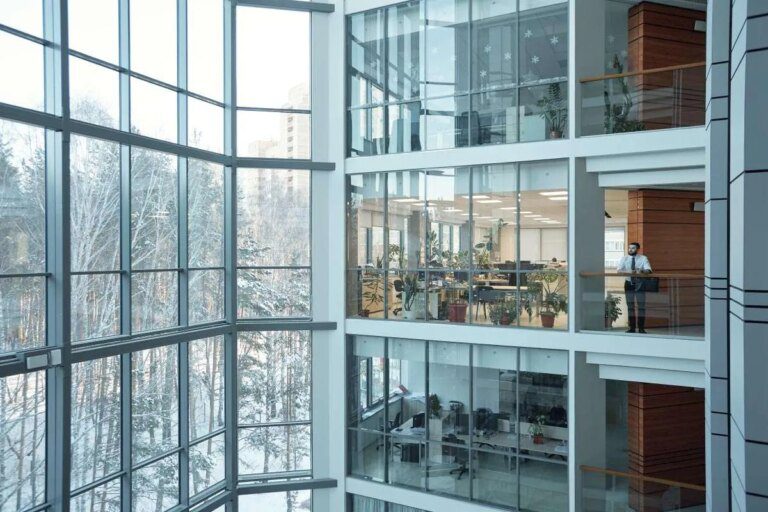Reimagining Office Environments for Health and Productivity
Traditionally, workplaces have not been associated with health and wellness. Despite the availability of fitness facilities and healthy snacks, many employees do not view office environments as conducive to well-being. Recent insights suggest that this perception could shift significantly, especially in light of the growing body of research indicating that workplaces prioritizing health can enhance both employee satisfaction and productivity.
The Financial Implications of Workplace Health
U.S. businesses reportedly lose around $575 billion each year due to decreased productivity. This problem is not solely rooted in physical illness; mental health challenges, particularly depression and anxiety, also contribute significantly. Globally, an estimated 12 billion workdays are lost annually due to these issues, costing economies about $1 trillion. Enhancing indoor air quality alone has shown to positively impact productivity.
Smart Buildings: A Path to Wellness
To create healthier workspaces, buildings must adopt smarter technologies. Many existing structures possess automated systems focused primarily on energy efficiency, neglecting occupant health optimization. Erin McDannald, co-founder and CEO of Elevated, highlights that “saving energy is easy. What’s harder is optimizing for health, and that’s where the real savings happen.” Her company utilizes advanced software to enhance environmental conditions in office spaces, focusing on air quality, office design that promotes movement, and smart lighting that emulates natural light.
Key Environmental Factors and Health Risks
Identifying which features actually promote occupant health can be complex due to the myriad of influencing factors. Elevated has concentrated its analysis on viral outbreaks by evaluating over 500 data points, identifying three critical environmental conditions linked to outbreaks:
- High levels of volatile organic compounds (VOCs)
- Elevated particulate matter (PM2.5)
- Increased carbon dioxide (CO₂)
While these factors are not direct causes of outbreaks, they relate closely to dense occupancy levels. As companies prioritize space efficiency, especially during peak hours, they might inadvertently create conditions that hinder employee productivity and health.
Improving Air Quality Without Compromising Energy Efficiency
Not every organization has the luxury of increasing office space, but they can work proactively to mitigate harmful contaminants associated with high foot traffic. Elevated sets an example by continuously monitoring air conditions and introducing fresh air when necessary, conducting air turnovers at rates two to three times higher than typical offices. McDannald notes, “Our HVAC fan might wear out sooner, but it’s worth it for the benefits.” Such initiatives led to a remarkable 40% reduction in employee medical claims, further demonstrating the financial viability of investing in health-centric building practices.
Challenges of Implementing Fresh Air Solutions
While increasing fresh air circulation appears to be a straightforward solution, it often presents hurdles. Conditioning fresh air can be costly due to the necessity of heating, cooling, and dehumidifying it. Furthermore, in urban areas with poor air quality, extensive filtration systems may be required. Some buildings lack proper infrastructure to facilitate outdoor air intake, making upgrades financially prohibitive.
Balancing Health and Energy Costs
There exists a fundamental tension between ensuring high indoor air quality and managing energy consumption. In light of regulatory pressures to reduce emissions, health considerations often take a backseat. To address this, initiatives like the Healthy Workplaces Coalition, launched by the International WELL Building Institute and the Worldwide Cleaning Industry Association, strive to encourage infrastructure improvements that prioritize employee well-being.
Analyzing Long-term Benefits of Health-focused Buildings
Assessing the financial ramifications of investing in healthier workspaces is crucial. Although the immediate costs of upgrades can deter building owners, the long-term benefits—both economically and socially—present a compelling case. Tyler Smith, head of Global Lifecycle Solutions at Johnson Controls, states, “The financial outcomes of smart building adoption will always matter.” Each success in healthier building technology prompts more investors to reconsider their approaches.
Government Regulation and Market Demand
Despite the advantages, lack of federal support for stringent building regulations continues to be an obstacle. Past administrations have aimed to reduce regulations that might foster innovation, leaving gaps in national standards regarding healthy building practices. Non-profit certifications like LEED, WELL, and Fitwel are beginning to fill these voids. As demand for healthier spaces grows among investors and tenants, market influences could expedite these improvements in building practices.
Conclusion: A Vision for Healthier Workspaces
Future offices could transform from mere workplace environments to hubs of health and well-being, potentially motivating employees to engage more productively. Achieving this vision will require significant investments of time and resources, with a necessary shift in how building health is prioritized alongside comfort and energy efficiency. Evidence indicates that healthier buildings can lead to cost savings and attract higher-quality tenants. While some stakeholders may require compulsion to act, the combined force of consumer demand and regulatory pressures will likely drive widespread adoption of healthier building technologies.
